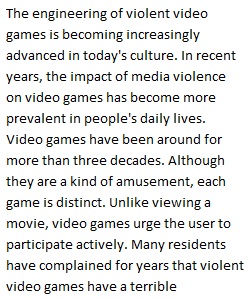


Q The purpose of your argumentative research paper is to develop an articulate, persuasive argument about an issue of social, political, or historical significance. You will apply critical thought and research skills in support of your argument to substantiate any and all claims made, providing all necessary contextual information and background. You must, in short, prove to the audience that you actually know what you are writing about, that you know your subject, as you proceed to take, explain, and defend the position you have put forth. The final essay has these components: Claim: The overall thesis ( three point) the writer will argue for. Data: Evidence gathered to support the claim. Warrant (also referred to as a bridge): Explanation of why or how the data supports the claim, the underlying assumption that connects your data to your claim. Counterclaim: A claim that negates or disagrees with the thesis/claim. Refutation: Evidence that negates or disagrees with the counterclaim. Including a well-thought-out warrant or bridge is essential to writing a good argumentative essay or paper. If you present data to your audience without explaining how it supports your thesis your readers may not make a connection between the two or they may draw different conclusions. Don't avoid the opposing side of an argument. Instead, include the opposing side as a counterclaim. Find out what the other side is saying and respond to it within your own argument. This is important so that the audience is not swayed by weak, but unrefuted, arguments. Including counterclaims allows you to find common ground with more of your readers. It also makes you look more credible because you appear to be knowledgeable about the entirety of the debate rather than just being biased or uniformed. Conclusion An effective conclusion goes beyond simply restating or summarizing the argument. The goal is to synthesize, rather than repeat, an insight that derives from the points you made and the support and examples you used that fits everything together. You should indicate what the broader implications of your argument are, or in what ways the problem your argument seeks to address can/should/will/will not change. Doing this can be tricky, so don’t be afraid to tinker with a couple of drafts of your conclusion before making a final decision. Finally, make sure your paper has: 4 PAGES MINUMUM Proper MLA citation format A works cited page with at least 5 (FIVE) sources Sufficient use of each of your sources in the paper MLA citations used properly for both quotes and paraphrases A complete Introduction and a complete conclusion A clear three point thesis statement Well-reasoned support and justification at every step of the way, at least one evidence per paragraph Proper page formatting. 12 point Times New Roman, 1 inch margins, double spaced. Block quotations—when what you are quoting exceeds four typed lines—must be centered, indented a half-inch, and single spaced.
View Related Questions